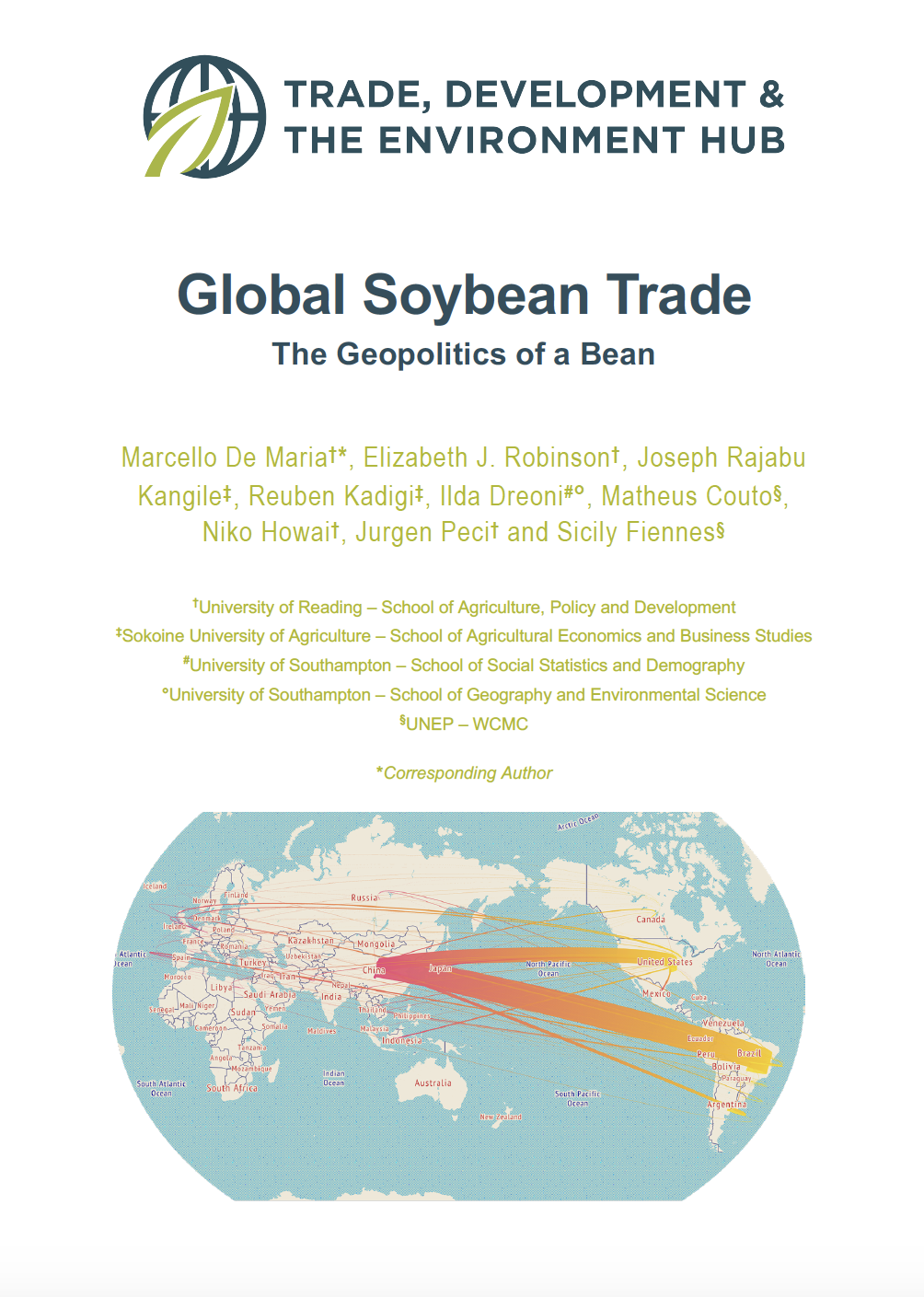Resource information
With a diameter of only 5 to 11 millimetres on average, it is fascinating to think how soybean is currently affecting – and affected by – changes in economy, environment and society, both at the global and at the local level. Bearing in mind the main objective of the Trade Hub project and the specific contribution of Work Package 4, the present Scoping Study analyses the evolution of the ‘geopolitics’ of international trade flows, dissecting social, institutional, economic and environmental outcomes along the value chain of this commodity.
Originally cultivated in China more than 3000 years ago (Hymowitz, 1970), soybean today is a global commodity, with 170 countries directly taking part – either as importers, exporters or both – to international trade flows in 2017 (Figure 11). The industrial and the agrarian revolution not only contributed to reshaping the traditional geography of soybean diffusion, production and consumption all over the world, but also ignited another fundamental shift for this crop: from a food staple traditionally grown and consumed in China and Eastern Asia for thousands of years, by the 20th Century soybean had turned into a versatile and globally demanded cash crop, with a new production centre based in the USA (Prodöhl, 2019).
Production rates increased constantly over time, often faster than the world population growth rate, with a further acceleration in soybean production volumes from the beginning of the new millennium. Driven by the Chinese economic boom and by their renewed appetite for soybean, and sustained by the rapid expansion of the production in countries such as Argentina and Brazil, the world’s production doubled since the early 2000’s, with about 350 million tons harvested over almost 125 million hectares in 2018 (Figure 2 and Figure 3).
The extraordinary expansion of soybean production, harvested area and trade volumes in the last two decades undoubtedly created economic benefits, but it also raised awareness over the negative impacts of this sector on environment and society (Fearnside, 2001; Brown, 2012a; Garrett, Rueda and Lambin, 2013; Fehlenberg et al., 2017; Sun et al., 2018; He et al., 2019), leading to a global call for a sustainable shift in the soybean industry (KPMG International Cooperative, 2013; Boerema et al., 2016; Kastens et al., 2017; RTRS, 2017; Wu et al., 2020).
This report takes stock of the existing literature and data, analysing the evolution of global soybean trade flows and the related implications for society and environment. Following the approach proposed by De Maria (2019) and adapting it to the specific focus of this scoping study, we organised this study around a number of distinct but intertwined thematic areas: History, Economics, Environment, People and Institutions. In order to take into account not only the global dynamics, but also the peculiarity of the local contexts, we present short country-specific sections for Tanzania, China and Brazil. We then lay out a set of open questions, as well as our strategy to address them in the future, before offering some concluding remarks.

